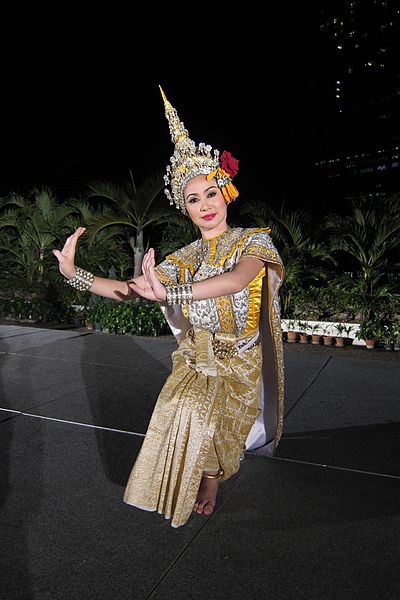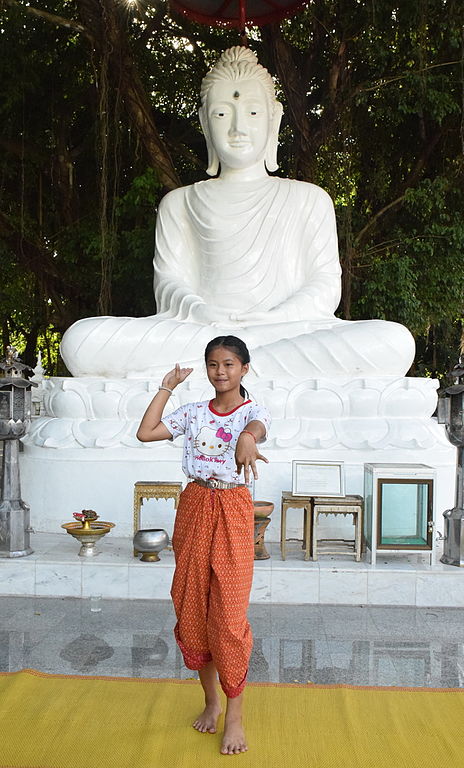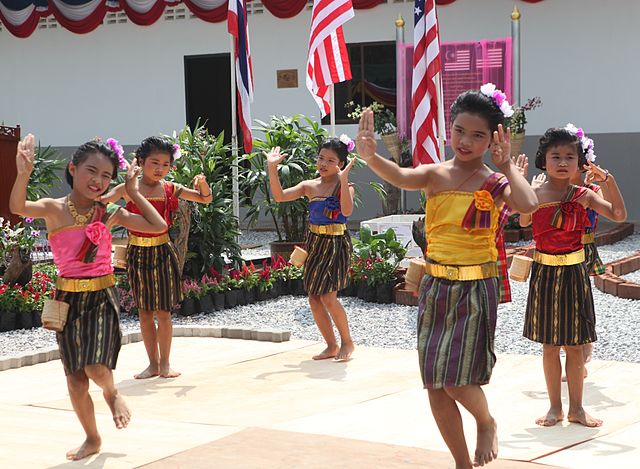
Three books newly acquired by the Thammasat University Libraries help readers understand the importance of intangible cultural assets in Thailand. The books, donated by Ajarn Adul Wichiencharoen and shelved in the Adul Wichiencharoen Room of the Pridi Banomyogn Library, include Developing a New Standard-setting Instrument for the Safeguarding of Intangible Cultural Heritage; Korean Intangible Cultural Properties: Traditional Music and Dance; and Traditional Music of the World. The term Intangible cultural heritage (ICH) may not be familiar to all Thais. The word intangible means something that cannot be touched. An intangible thing does not have a physical presence, so it cannot be picked up and put down like an object. The word derives from a Latin term meaning to touch. While statues, buildings, paintings, and other solid items may be seen as part of a nation’s tangible cultural heritage, what about all forms of culture that are not tangible? Songs, music, dance, drama, skills, food, crafts and festivals are all forms of culture that are difficult to preserve in a museum, unless they are recorded. In 2003, the iwrote a Convention for the Safeguarding of Intangible Cultural Heritage, based on a survey of its member states. The idea was to protect and promote these forms of culture, which may sometimes offer different challenges than just putting a piece of sculpture in a museum to safeguard it.

The reasons for this document included that ICH was a main agent of motivation for cultural diversity and sustainable development. Tangible and intangible cultural elements work together, and are united as representing important parts of any nation’s heritage. As the world grows smaller and more uniform, things that are unusual or specific to one place may not survive long, or may be permanently damaged, unless care is taken to preserve them. All nations agree that this is an important goal, as no one wishes to lose elements of national heritage. Local communities are essential for helping to preserve and re-create these traditions. It was seen as essential to build awareness, especially among students and other young people, of the importance of saving culture for the future. The convention defined ICH as
the practices, representations, expressions, knowledge, skills – as well as the instruments, objects, artefacts and cultural spaces associated therewith – that communities, groups and, in some cases, individuals recognize as part of their cultural heritage. This intangible cultural heritage, transmitted from generation to generation, is constantly recreated by communities and groups in response to their environment, their interaction with nature and their history, and provides them with a sense of identity and continuity, thus promoting respect for cultural diversity and human creativity. For the purposes of this Convention, consideration will be given solely to such intangible cultural heritage as is compatible with existing international human rights instruments, as well as with the requirements of mutual respect among communities, groups and individuals, and of sustainable development.
In other words, it involves things that people do, or show, and the skills related to these activities, not just objects resulting from this knowledge. Sometimes called living cultural heritage, it may be seen in many different forms of expression.

Intangible Thailand
ICH in Thailand is classified according to the performing arts, including music, dance and theatre; traditional craftsmanship; folk literature; rituals and festival events; knowledge and practices about nature and the universe; traditional craftsmanship; folk games and sports; social practices, rituals and festive events; knowledge and practices concerning nature and the universe; and languages.
As The Bangkok Post reported in 2013, The Thai Ministry of Culture states that it is speeding up efforts to have Thailand join the UNESCO list of intangible cultural heritage. A list of intangible treasures started by the Cultural Promotion Department in 2009 now has 150 items, including the Thai Shadow Puppet Theatre. Listing by UNESCO would help to preserve them. Among the different cultural practices to be protected would be Hun Krabok, designated in 2010, a traditional form of puppet theatre from North-central Thailand. Hun Krabok, or bamboo puppet theatre was created during the reign of HM King Chulalongkorn (King Rama V), inspired by Chinese puppet theatre from Hainan. Puppets are partly made from bamboo. Although a number of troupes of pupper theatre performers remain, their audiences are limited. Another example would be Li-ke Song Khrueang, designated in 2010, a folk dance drama from central Thailand. It also began during the reign of HM King Rama V, and requires much skill and training from its performers. They must be able to dance, sing, and speak lines, as well as act convincingly. To keep the interest of the public today, Li-ke Song Khrueang troupes have to adapt their costumes to be more eye-catching. Also threatened with change is Lakhon Nai, designated in 2010, the well-known court dance drama from central Thailand. With its all-female cast, it dates back to the Ayutthaya era. Its traditional slow pace, which some spectators have compared to the Japanese Noh Theatre, may seem too slow for some impatient viewers today. As the official website for ICH Thailand observes:
Lakhon Nai is recognized as the valuable legacy of Thai performing arts which should urgently be safeguarded and perpetuated for future generations as an intellectual cultural heritage. The performances of all episodes of Lakhon Nai should be organized and promoted before they are lost forever.
There are other examples of cultural artefacts worth preserving outside the field of the performing arts. In folk literature, there is the Text on Thai Cats, designated in 2010. Originating from the central region of the Kingdom, Tamra Maeo Thai was first written on Thai Khoi leaf manuscripts. They describe 17 types of cats with good characteristics and six types with bad characteristics. Good ones include Wichian Mat, with clear blue eyes and off-white coat with black dabs of fur on nine parts of the body, bringing good luck to owners. By contrast, Thupphonlaphet, with an off-white coat, crooked tail, and red eyes, steals things all the time and generally brings bad luck to owners.
In March, Thai PBS announced that the Thai government has agreed to include Khon masked dance and traditional Thai massage as part of UNESCO’s ICH list. These among others will be suggested at the 12th session of the Intergovernmental Committee for the Safeguarding of the Intangible Cultural Heritage this December. UNESCO then evaluates and accepts the suggestions, giving these national cultural icons high visibility, status, and funding. Five such cultural icons will be presented annually to UNESCO until the year 2021. To be considered for future inclusion are Muay Thai kickboxing, Nora dance drama and traditional Thai meals.

(All images courtesy of Wikimedia Commons)
